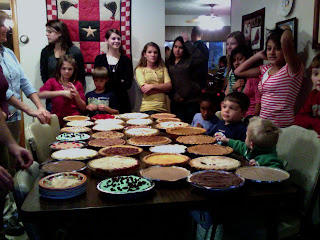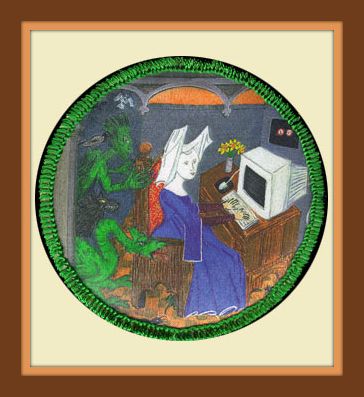There is no world without Verona walls,
But purgatory, torture, hell itself.
Hence banished is banish’d from the world,And world’s exile is death; --William Shakespeare, Romeo and Juliet, Act III, Scene III

Verona is probably best known as the setting for Romeo and Juliet's tragic love story as immortalized by Shakespeare. But it is full of many other interesting things. I got to spend a day in Verona all by myself the day before AJ and MJ got in. C and I had planned on taking T and going together on an ITR trip, but he was still sleeping in, and we decided to let him sleep rather than waking him to go.
ITR trips are fascinating to me. ITR stands for Information, Tickets, and Reservation Office and it is a service provided to those affiliated with the military. They set up all sorts of trips, complete with bus transportation, guides, and hotels if needed and all you have to do is sign up, pay your money in dollars, and you're set to go. It is a really easy way to see the sights in a foreign country you have been assigned to live in. I can see the great service that it is, but I personally think it's "cheating." All the research, trying to decide what you want to see and do, all the travel planning are completely out of your hands. I feel a little snobbish towards those who would only choose to use ITR for their travelling.
AJ's parents have gone on a few ITR trips, but they have done A LOT of travelling on their own. On the other hand, the woman I sat next to on the bus almost only travels with ITR. She went to Provence that way. And there were several people on this trip who were planning on going to Rome over Thankgiving. (That's probably an 8-hour bus ride. UGH. Train is much better.) When we were in Italy before, we went on an ITR trip to Florence. It was a bitter cold day and a long bus ride to and from Vicenza, so we didn't get to see Florence like we wanted.
Anyway, Verona is only an hour's drive from Vicenza, so it is much more doable. I think T would have been fine on the bus, but it was sure nice to go on my own. After driving through the city, we went to the Giardino Giusti, a Renaissance era garden of a wealthy Veronese family. It seemed to be dedicated to Bacchus, as there were several statues of him around. At the top of the hill, there was a giant monster like face with its mouth open and they could light a fire inside the mouth. Supposedly, it was a place where philosophers and other thinkers gathered to talk (and party too). There were rows of tall pointed cypress (I never really knew what they looked like before) a lot of shaped hedges, and a small maze.


Then, we walked over the river and went into the main city area. We saw the Gothic tombs of several of the members of an important Veronese family, Della Scala. The three males were nicknames Cangrande, Il Mastino, and Cansignorio--Big Dog, The Mastiff, and Mr Dog. They were memorialized with big statues on pedestals.

And surrounding the area was an iron gate with each little intersection including the Scala family crest, including a symbol of a ladder or
scaletta in Italian. You can't see it well in the photo, but here is the crest.

When Dante was in exile from Florence, he stayed for quite a while in Verona with Cangrande hosting him.
And of course, we went past the Romeo and Juliet sites. I saw Juliet's house the last time we were in Verona, which was a good thing because it was completely mobbed this time around. I find the great tourist attraction to this pseudo-historical site to be laughable. There is a home that would have been similar to Juliet's home, complete with balcony, which tourists come to gawk at. The name of the family that owned the home was the Cappellos, similar to Shakespeare's Capulets, which probably triggered its original link to the fictionalized Juliet. In the small courtyard, there is a statue of Juliet, and supposedly, if you put your hand on her right breast, you will have luck in love. (Ugh. What kind of horrible tradition is that? I refused to participate and I didn't let AJ either. I can't remember if he wanted to or not.) As a result, the finish on her right breast is completely worn off.
I also saw the Roman era arena. It is right off the main piazza at the entrance to Verona's city center.

It doesn't have the majesty of the Colisseum, mostly because the interior was currently set up with lots of chairs and a stage--it is used during the summer season as a performance venue. AJ's parents saw a performance of a Romeo and Juliet opera there this summer. With the Colisseum, you can see all the excavated cavities under the main arena floor.

And here is a medieval bridge, the Ponte Scaligero, built by Cangrande. After the Germans blew it up, the Veronese dredged the river to salvage the masonry in order to rebuild it.

 I started with A Doll's House, and was turned off a little bit by it. Not that it wasn't interesting--it was, and I would like to see a performance. The themes in the play reminded me a lot of Edna in The Awakening. The story, perhaps owning to the fact that it had to be condensed into a 2-hour play, was simplistic and I felt like the characterization of the main characters was too predictable. Or that Ibsen was too heavy handed in his characterizations. Nora's character especially was much more simplistic to me than Edna and her awakening seemed to come too suddenly without much nuance. It didn't resonate with me in the same way that Chopin's work did. I wondered how anyone could get so fired up--especially her husband--about her forging her father's name so that she could help her husband when he got sick. I also thought it curious that she could so easily leave behind her children (as did Edna). I am also a woman of little imagination, and so perhaps the story would really come to life in a play, while the text feels flat.
I started with A Doll's House, and was turned off a little bit by it. Not that it wasn't interesting--it was, and I would like to see a performance. The themes in the play reminded me a lot of Edna in The Awakening. The story, perhaps owning to the fact that it had to be condensed into a 2-hour play, was simplistic and I felt like the characterization of the main characters was too predictable. Or that Ibsen was too heavy handed in his characterizations. Nora's character especially was much more simplistic to me than Edna and her awakening seemed to come too suddenly without much nuance. It didn't resonate with me in the same way that Chopin's work did. I wondered how anyone could get so fired up--especially her husband--about her forging her father's name so that she could help her husband when he got sick. I also thought it curious that she could so easily leave behind her children (as did Edna). I am also a woman of little imagination, and so perhaps the story would really come to life in a play, while the text feels flat. Hedda Gabbler was a woman of a completely different nature than Nora, almost her complete opposite. I never did quite grasp what Hedda was all about. Manipulative, deceitful, mean, but to what end? Especially given the final suicide scene. Was she just miserably unhappy and wanted everyone else to suffer? I didn't get it. It was certainly interesting as a psychological portrait of a woman, and was probably ground-breaking in drama for this theme. And I just found that Cate Blanchett played Hedda very recently. Again, I would like to see the play performed.
Hedda Gabbler was a woman of a completely different nature than Nora, almost her complete opposite. I never did quite grasp what Hedda was all about. Manipulative, deceitful, mean, but to what end? Especially given the final suicide scene. Was she just miserably unhappy and wanted everyone else to suffer? I didn't get it. It was certainly interesting as a psychological portrait of a woman, and was probably ground-breaking in drama for this theme. And I just found that Cate Blanchett played Hedda very recently. Again, I would like to see the play performed.














